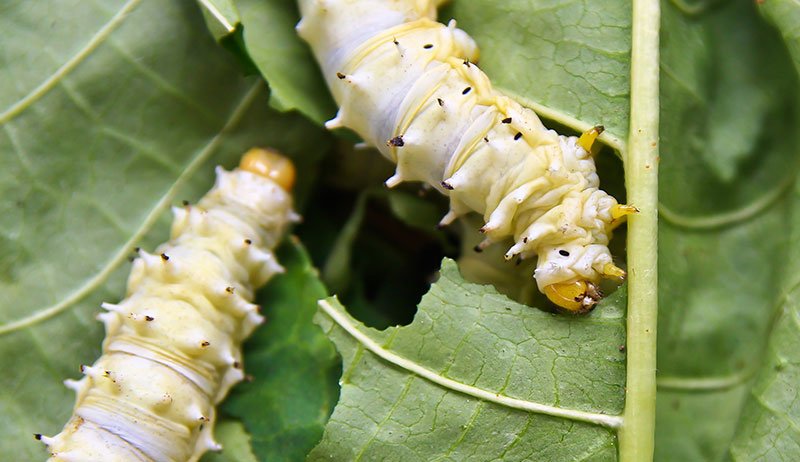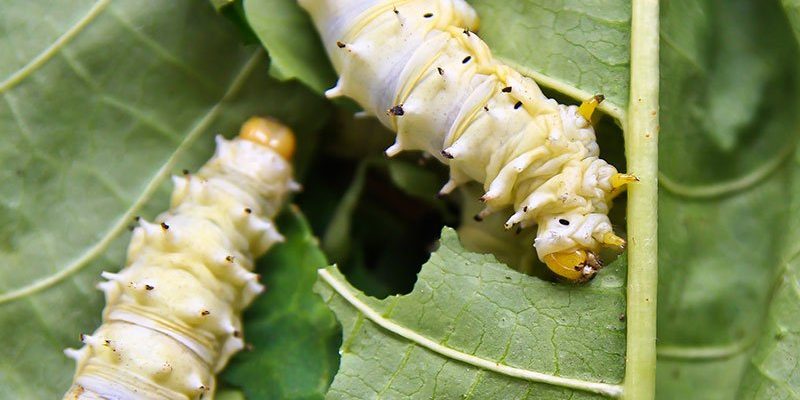
If you’re thinking about diving into the world of *Bombyx mori* (the scientific name for silkworms), you’ll want to know whether you can keep them buzzing all year long indoors. Spoiler alert: yes, you can! With proper care and attention, these little guys can flourish in your living space, allowing you to enjoy the process of raising them without worrying about seasonal changes. Let’s break down what it takes to successfully raise silkworms in your home!
Understanding Silkworms: Nature’s Little Creators
Before we get into how to care for silkworms indoors, it’s essential to understand what they are and what they need. Silkworms are the larvae of the silk moth, and they primarily feed on mulberry leaves. They’re known for producing silk, which has been prized for thousands of years. Raising silkworms is not only a way to observe nature up close, but it can also be a rewarding experience, especially when you see the little silk cocoons they spin.
Silkworms have a pretty straightforward lifecycle, which makes them suitable for beginners. They hatch from eggs, go through several stages of growth called instars, and eventually spin cocoons to metamorphose into moths. This process takes about 6-8 weeks. If you plan to keep them year-round, you’ll need to ensure they have a consistent environment that mimics their natural habitat, including temperature and humidity levels.
You might be wondering why someone would want to raise silkworms indoors instead of outside. For one, raising them indoors protects them from predators and harsh weather. Plus, it gives you the chance to observe their entire life cycle without interruption. It can be like having a front-row seat to a beautiful natural performance!
Creating the Ideal Environment
The first step to successfully raising silkworms indoors is setting up their environment. Think of it like creating a comfy little apartment for your new pets. Here are some essentials to consider:
- Temperature: Silkworms thrive best in temperatures between 70°F and 85°F (21°C – 29°C). Too cold, and they’ll become lethargic; too hot, and they might not survive.
- Humidity: Aim for a humidity level of around 60-70%. Too dry, and they can dry out; too humid, and they risk mold.
- Light: While silkworms don’t need direct sunlight, they should be in a well-lit area to mimic their natural environment.
Consider using a simple plastic box or a small aquarium as their home. Make sure it has proper ventilation. A mesh screen can work wonders to keep the air flowing while preventing escape attempts. You can also use a thermometer and hygrometer to keep track of the temperature and humidity, ensuring your silkworms are happy and healthy.
Feeding Your Silkworms
Feeding silkworms might seem straightforward, but it’s crucial to get it right. The primary diet for silkworms is **fresh mulberry leaves**. Here’s how you can manage their diet:
- Freshness: Always use freshly picked leaves. Wilted leaves can lead to health problems. If you can’t find mulberry leaves near you, look for stores that sell them or consider growing your own mulberry tree.
- Quantity: Young silkworms eat less than older ones. As they grow, they’ll need more food. Pay attention and adjust as they munch through their meals.
- Feeding Schedule: Generally, feed them multiple times a day. In the early stages, they might eat every few hours. As they grow, they can go a bit longer between meals.
Monitoring their eating habits can also be a fun part of the experience! If they’re not eating well, it might indicate environmental issues like temperature or humidity that need adjusting.
Maintaining Proper Hygiene
Keeping your silkworms’ habitat clean is just as important as providing food. Think of it like cleaning your room—it’s not glamorous, but it’s essential for a healthy living environment. Here are some tips on maintaining hygiene:
- Remove Waste: Silkworms can produce a lot of waste, so it’s best to clean their container daily or every other day. This helps prevent mold and keeps the air fresh.
- Replace Bedding: If you’re using a substrate like paper towels or leaves at the bottom of their habitat, change it regularly to keep it clean and dry.
- Avoid Overcrowding: Make sure not to overcrowd your silkworms. If they don’t have enough space, it can lead to increased waste and stress.
A clean space not only keeps your silkworms healthy but also makes for more enjoyable viewing and interaction. After all, who wouldn’t want to watch these little silk-spinning machines thrive in a neat environment?
Handling and Harvesting Silk
Once your silkworms have grown and spun their luxurious cocoons, you might wonder what to do next. Handling them can be a delicate but thrilling part of your journey! Here’s how to go about it:
- Gentle Handling: When it’s time to handle your silkworms or cocoons, do so gently. They’re sensitive creatures, and rough handling can harm them.
- Harvesting Silk: To harvest silk, you can boil the cocoons to kill the pupae without damaging the silk strands. Once boiled, you’ll find long strands of silk that you can carefully unwind.
- What to Do Next: After you’ve harvested the silk, you can dye it or use it in various crafting projects! It’s a beautiful and rewarding end to your silkworm-raising adventure.
This step might feel a little bittersweet, but remember that this process is all part of nature. You’re providing a unique experience for these little creatures and yourself!
Common Challenges and Solutions
Like any project, raising silkworms doesn’t come without challenges. Here are some common issues and how to tackle them:
- Temperature Fluctuations: If your home gets too hot or cold, consider using a space heater or air conditioner to keep things stable. Small fans can help with airflow, too!
- Pests: Sometimes, pests can invade your silkworm habitat. If you notice any, remove them quickly to prevent them from harming your silkworms.
- Mold Growth: Excess humidity can lead to mold. If you see it, remove affected silkworms immediately and adjust the humidity levels.
Keep an eye on your silkworms’ behavior. If they seem sluggish or unwell, it’s often a sign you need to adjust their environment or diet.
So, can you raise silkworms indoors year-round? Absolutely! With the right conditions, care, and attention, these little creatures can thrive all year long. Not only will you enjoy watching their fascinating life cycle unfold, but you’ll also gain insights into nature and the incredible process of silk production.
Whether you’re looking to add a unique hobby to your life, want to teach kids about biology, or simply love nature, raising silkworms can bring joy and unexpected learning experiences. By following the guidelines above, you’ll be well on your way to becoming a successful silkworm caregiver. Happy farming!

